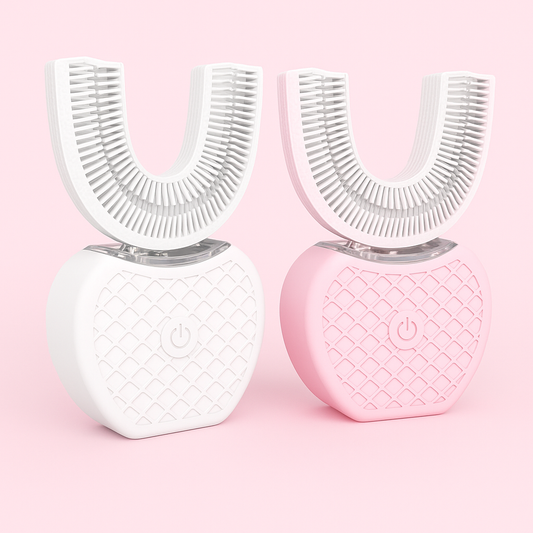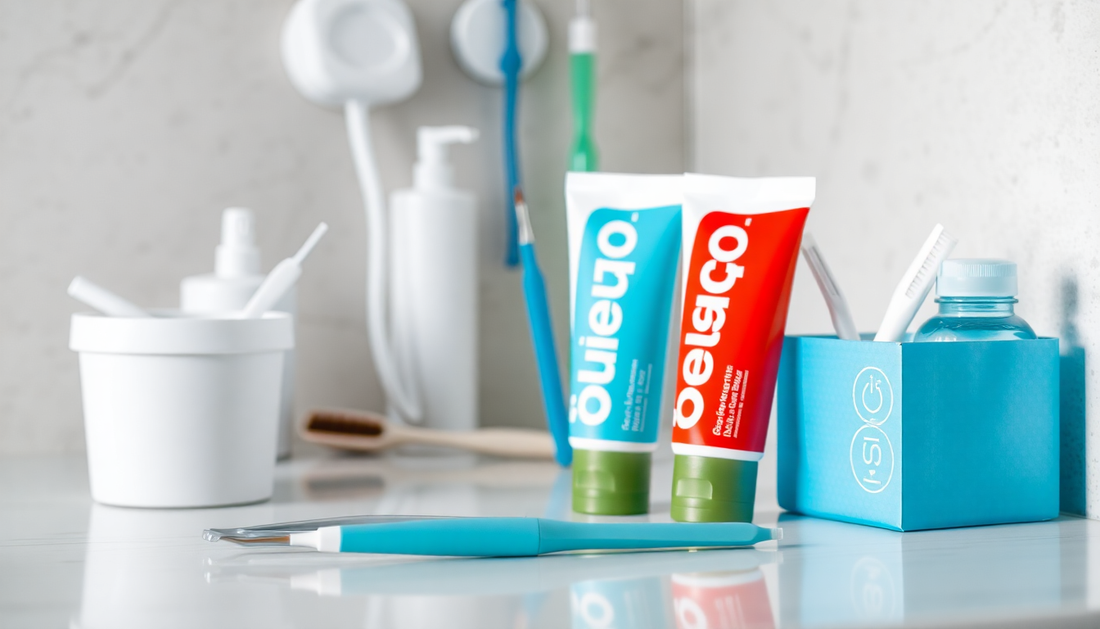Introduction: Why Fluoride-Free Whitening Toothpaste Is Trending
More consumers are searching for the best toothpaste whitening teeth without fluoride—whether for sensitivity, personal preference, or to complement fluoride-free lifestyles. At the same time, people want real results: a toothpaste that whitens teeth, prevents decay, and supports gum health. Emerging formulations that combine niacinamide and xylitol offer an intriguing alternative to traditional fluoride toothpastes, giving a gentle but effective approach to brighter, healthier smiles.
What This Guide Covers
- How niacinamide and xylitol work in oral care
- Other effective fluoride-free ingredients and how they compare
- How to choose the best toothpaste for whiter teeth (fluoride-free)
- Daily routines, pro tips, and safety considerations
- Where to find quality fluoride toothpaste free options, including recommended links
Understanding Tooth Discoloration: Why Whitening Works
Teeth become discolored for two main reasons: extrinsic stains on the enamel surface (from coffee, tea, tobacco, red wine) and intrinsic discoloration inside the tooth (age-related changes, trauma, medication). Most over-the-counter whitening toothpastes target extrinsic stains—either by physically polishing the surface (abrasives) or by chemically breaking down the staining molecules. For people seeking a fluoride-free approach, the right combination of mild polishes, remineralizing agents, antibacterial components, and softening/anti-inflammatory ingredients can improve brightness and overall oral health.
The Science: Niacinamide in Oral Care
Niacinamide, also known as vitamin B3, is well-known in dermatology for reducing inflammation, supporting barrier function, and improving tissue health. In oral care, niacinamide is being explored for:
- Anti-inflammatory effects that can help reduce gum redness and swelling.
- Support for mucosal repair and resilience of soft tissues in the mouth.
- Complementing antibacterial strategies by helping the tissue recover from bacterial irritation.
Although niacinamide does not directly bleach enamel like peroxide, by improving gum health and reducing inflammation it helps the mouth maintain a cleaner environment where whitening agents and polishing ingredients can work more effectively with less sensitivity.
How Xylitol Helps Teeth Look Whiter and Stay Healthier
Xylitol is a sugar alcohol that bacteria cannot ferment. This makes it a powerful ally in fluoride-free formulas because:
- It reduces levels of Streptococcus mutans and other cavity-causing bacteria.
- It helps maintain a neutral oral pH, lowering acid-driven enamel erosion and staining risk.
- It can increase salivary flow when used in gum or lozenges, aiding natural cleaning and remineralization.
In combination with mild polishing agents and remineralizers, toothpaste with xylitol supports a brighter, healthier-looking smile over weeks of consistent use.
Other Fluoride-Free Ingredients That Aid Whitening
When selecting a fluoride-free whitening toothpaste, look for these proven or promising components:
- Nano-hydroxyapatite or calcium phosphates: Remineralize and rebuild enamel microstructure which can reduce the appearance of stains and improve surface gloss.
- Mild abrasive systems (controlled silica): Remove surface stains without high abrasivity. Check RDA ratings when available.
- Enzymes (e.g., glucose oxidase, lactoperoxidase): Help break down biofilm and reduce staining compounds in plaque.
- PAP (phthalimidoperoxycaproic acid) and sodium bicarbonate: Gentler chemical stain removers in some modern formulations.
- Desensitizing agents: Potassium nitrate or arginine (compatible versions) to limit sensitivity while whitening.
Be cautious with unproven or abrasive 'natural' ingredients such as activated charcoal—while they may remove stains, they can also wear enamel if not carefully formulated.
How Whitening Without Fluoride Compares to Traditional Methods
Traditional whitening often relies on peroxide-based bleaching (carbamide or hydrogen peroxide) and fluoride-containing toothpastes for remineralization and sensitivity control. Fluoride-free approaches trade peroxide bleaching for gentler polishing and enzymatic or chemical stain removal paired with remineralizers like nano-hydroxyapatite and antibacterial agents like xylitol. The outcomes may be more gradual, but they can yield meaningful cosmetic improvement with fewer side effects for people who want to avoid fluoride or high peroxide concentrations.
Choosing the Best Toothpaste Whitening Teeth Without Fluoride: A Practical Checklist
- Contains xylitol and/or niacinamide for antibacterial and soft-tissue support.
- Includes a remineralizing agent such as nano-hydroxyapatite or calcium phosphate.
- Uses mild polishing silica with a documented low-to-moderate RDA (ask brands for RDA when not stated).
- Provides clinical data or third-party testing demonstrating stain reduction or enamel protection.
- Offers desensitizing agents if you have sensitivity concerns.
- Free from excessively harsh abrasives, unnecessary peroxide concentrations, or high alcohol content.
Understanding RDA (Relative Dentin Abrasivity) and Why It Matters
RDA is the standard measure of a toothpaste’s abrasivity on dentin. High RDA can remove stains effectively but also damage enamel over time. For daily use, aim for a toothpaste with an RDA in the low-to-moderate range (generally under 250). If you're unsure, ask the manufacturer or choose a product marketed for sensitivity or enamel protection—these typically prioritize lower abrasivity.
Daily Niacinamide & Xylitol Whitening Routine (Step-by-Step)
- Morning: Brush for two minutes with a fluoride-free toothpaste that contains xylitol, niacinamide, and a remineralizer. Use a soft-bristled brush and gentle circular strokes.
- After meals: Chew sugar-free xylitol gum for 10–20 minutes to neutralize acids and encourage remineralization.
- Evening: Brush again with your niacinamide toothpaste. If you use whitening strips or peroxide-based products occasionally, do so under professional advice and not on consecutive nights to avoid sensitivity.
- Daily flossing: Remove interproximal plaque which can cause shadowing and stains between teeth.
- Professional hygiene: Visit your dentist or hygienist every 6–12 months for scaling/polishing and personalized recommendations.
Combining At-Home Fluoride-Free Whitening With Professional Care
For faster results or for intrinsic discoloration, professional options include in-office bleaching (often peroxide-based) and professional polishing. If you prefer to remain fluoride-free at home, you can still consult your dentist about safe, monitored professional treatments and complementary at-home products like niacinamide and xylitol toothpaste. Always disclose your preference for fluoride-free care so your dental team can tailor recommendations.
Common Myths About Whitening and Fluoride-Free Toothpaste
- Myth: Fluoride is the only effective way to prevent cavities. Fact: Fluoride is highly effective, but other agents like xylitol, remineralizers (nano-hydroxyapatite), and good oral hygiene also reduce caries risk.
- Myth: All whitening toothpastes whiten the same. Fact: Formulations differ hugely—abrasivity, active ingredients, and supporting remineralizers determine safety and effectiveness.
- Myth: Natural abrasives are always safer. Fact: Some natural abrasives (e.g., certain charcoals) can be very abrasive and harmful over time.
What to Avoid in Fluoride-Free Whitening Toothpaste
- High peroxide concentrations marketed for home use without professional supervision.
- Unlabeled or very high RDA abrasive blends.
- Alcohol-heavy mouthwashes that dry oral tissues when used frequently.
- Products that promise instant dramatic whitening—sustainable results usually take weeks of consistent use.
Realistic Timeline: When to Expect Results
With a consistent fluoride-free routine that includes niacinamide and xylitol, many users see subtle improvements in surface stain reduction and gum health within 2–4 weeks. More noticeable whitening may take 6–12 weeks, depending on stain severity and adherence to good oral hygiene practices. Combining at-home care with periodic professional cleanings accelerates results.
Safety and Who Should Be Cautious
While niacinamide and xylitol are generally well-tolerated, consider the following:
- People with radiation or chemotherapy-related oral mucositis should consult their oncology team and dentist before changing products.
- Those with very high cavity risk should discuss fluoride alternatives with a dental professional—some may still benefit from topical fluoride under supervision.
- Children under 6 should avoid swallowing toothpaste; consult pediatric guidelines for fluoride use in children.
How to Read Labels and Spot Quality Formulas
When evaluating toothpaste that whitens teeth without fluoride, carefully check the ingredient list and product claims. Look for:
- Specific actives listed (niacinamide, xylitol, nano-hydroxyapatite).
- RDA or abrasivity claims, or wording like "low-abrasion" or "for sensitive teeth."
- Any clinical study citations or "clinically proven" claims—verify details if possible.
- Third-party certifications if you care about vegan, cruelty-free, or organic standards.
SEO Tips for Finding the Right Product Online
Use keyword phrases that match intent. If you want product pages, search "best toothpaste whitening teeth" or "toothpaste without fluoride" along with "niacinamide" or "xylitol". Look for product pages with clear ingredient lists and customer reviews that describe long-term use rather than one-off experiences. For professionally curated options, explore specialty retailers that provide ingredient transparency and clinical notes.
Sponsored Product Suggestions and Where to Buy
If you want curated, fluoride-free oral care options focused on whitening and wellness, consider exploring Havana Body’s collection. They present formulations that align with niacinamide and xylitol strategies and provide product detail pages suited to thoughtful shoppers. Visit Havana Body for options like best toothpaste whitening teeth and specific fluoride-free choices like toothpaste without fluoride or toothpaste with xylitol.
Case Example: A 12-Week Fluoride-Free Whitening Plan
- Weeks 1–2: Start with twice-daily brushing using a niacinamide + xylitol toothpaste and daily flossing. Substitute sugar-free xylitol gum after meals.
- Weeks 3–6: Add an enzyme mouth rinse at night if recommended by your dental hygienist; continue nightly brushing with remineralizer included.
- Weeks 7–12: Re-assess with a dental visit. Consider professional polishing for stubborn surface stains and continue your at-home regimen. Expect visible lightening in surface stains and improved gum appearance.
Expanded FAQs
Q: Can niacinamide toothpaste replace fluoride entirely?
A: Niacinamide supports soft-tissue health and may reduce inflammation, but it does not replace fluoride’s well-documented remineralization benefits. For many low-risk adults, fluoride-free regimens with proven remineralizers and xylitol can be effective; high-risk patients should discuss tailored fluoride use with their dentist.
Q: Will xylitol make my teeth whiter quickly?
A: Xylitol helps reduce bacteria and acid that cause decay and staining over time. It contributes to a brighter smile gradually as plaque and staining agents are reduced.
Q: Are there any side effects from niacinamide in toothpaste?
A: Systemic side effects are unlikely from topical toothpaste use. Some people may notice mild taste changes or sensitivity to certain flavors—discontinue if irritation occurs and consult a dental professional.
Conclusion: Is a Niacinamide & Xylitol Fluoride-Free Routine Right for You?
If you want a gentle, health-focused approach to whitening that avoids fluoride, combining niacinamide and xylitol with remineralizing agents and controlled abrasivity is a sensible, evidence-informed option. Results are gradual but sustainable, and the approach supports both cosmetic goals and long-term oral health when paired with excellent hygiene and regular dental checkups.
Where to Find Quality Fluoride-Free Whitening Toothpastes
For shoppers seeking reliable, ingredient-transparent products, consider browsing Havana Body’s selection of fluoride-free oral care. They offer product pages and ingredient breakdowns for queries like "toothpaste that whitens teeth", "best toothpaste for whiter teeth", and "fluoride toothpaste free" so you can compare formulations and pick the one that fits your sensitivity and whitening goals.
Final Invitation (Sponsored)
If you’re ready to try a responsibly formulated, fluoride-free treatment focusing on niacinamide and xylitol for a healthier, brighter smile, visit Havana Body to explore and purchase products designed with those ingredients in mind. Click here to browse their selection and find the best toothpaste whitening teeth options that match your needs: buy Havana Body products. As always, consult your dentist for personalized advice before changing your oral care routine.


